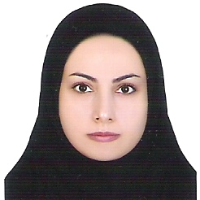Investigating the Pivotal Role of Spatiotemporal Flow of Evening and Night-time Activities in the Perception of Safety (Case Study: City Centre of Rasht)
Nightlife and night-time economic attractions are a proper way to expand a working day and the impetus for national growth and development. The present study sought to answer the basic question of how the city of Rasht, Iran could provide a suitable platform for the spatiotemporal flow of activities in the evening and at night.by adopting an analytical framework of time geography and quantitative analysis of nightlife consumption practices in the city center.
There have been many studies outside Iran on urban nightlife, most of which refer to a combination of social science studies on alcohol and the night leisure industry (Aresi & Pedersen, 2016; Pedrero-García, 2018; Søgaard, 2017). Studies conducted in Iran on nightlife have addressed the topic differently from the research performed outside Iran; these studies have been focused on geography and tourism planning (Shaykh-Baygloo & Soltani, 2019), urban vitality (Ghazanfarpor et al., 2019), cultural factors (Anizadeh, 2018), urban night leisure planning (Kashfi, 2012), and urban night landscape with an emphasis on lighting (AkhavanSaraf et al., 2014). Against this background of research, the present study sought to complement the previous geographic research by adopting an analytical framework of time geography and a quantitative analysis of nightlife consumption practices at the center of Rasht. The innovative aspect of the present study, adopting an analytical framework of time geography, was the combination of two fields, namely nightlife consumption and perception of safety. The perception of safety, that is, the experience of the subjective feeling of being secure (Tulumello & Falanga, 2015), has been known as a key component of a well-functioning city (Cozens & Tarca, 2016). It is influenced by many factors, including the built environment and activities (Bennetts et al., 2017; Piroozfar et al., 2019; van Nes et al., 2016) as an attribute of safer places (Llewelyn-Davies & Partnership, 2004). The literature (Heshmati & Charehjoo, 2018; Park & Garcia, 2019; Piroozfar et al., 2019; Yaran et al., 2019) suggests that the activity factor alone cannot cause spatial differentiation, concentration and thus a greater sense of safety. The solution is to create a high-quality environment by providing different types of complementary opportunities and activities and thoughtfully designing spaces to minimize inconsistencies so as to host a variety of uses and users. This is doubly important in the discussion of nightlife.Urban spaces attract a large number of people at night. The most easily distinguishable time-space layer is that of life and business in the evening and the early hours of the night (usually during 9-11 PM, but sometimes during 6-11 PM) (Rowe & Bavinton, 2011). After evening business, night-time business (11 PM to 2 AM) begins, and the number and diversity of nightlife users decreases dramatically, resulting in fewer services, especially public transportation. The expected outcomes of the present study were the urban nightlife ideals: to identify nightlife consumption practices and evaluate the spatiotemporal flow of activities in two layers of time-space, i.e., evening-downtown Rasht and night-downtown Rasht, in terms of perceived safety, diversity, and inclusivity.
A questionnaire was used for the data collection. The participants were asked to provide information on the following:(1) geographic locations of night-time activities in the city; (2) types of nightlife activity, including the movies, cafes/restaurants, parks/green spaces, bazaars/shopping malls (commercial centers, hypermarkets, etc.), walking/running, gymnasiums, etc.; (3) arrival time and duration of the last night out; (4) companionship, involving group size and group composition in terms of gender and ethnicity.In a part of the questionnaire, the respondents were asked to evaluate their feelings of safety/lack of safety at a specific (nightlife activity/entertainment) location and state the reason. In addition, the questionnaire included questions about the respondents’ more general patterns of going out and their demographic and socioeconomic statuses. The respondents were asked how often they went out on average and where they often went for nightlife. They were also asked about their genders, ages, lifestyles (living conditions, place of residence), social classes (academic degree, occupation, and type of work), and ethnicities. The data were analyzed with descriptive and inferential statistical methods (chi-squared test and two-step cluster analysis) using the SPSS 26 software.
The cluster analysis indicated significant differences in the types of nightlife consumption in downtown Rasht. Nevertheless, the heterogeneity in the space-time paths of nightlife downtown could be summarized in two distinct patterns: going to the park and shopping. These patterns are diverse in many ways, but could be identified at a part of the city center (Sabzeh Meydan Park). The key predictors included the following in descending order of significance: group ethnicity (1.00), group gender (1.00), group size (1.00), type of nightlife activity/entertainment (0.82), average duration (0.60), living conditions (0.48), ethnicity (0.42), location (0.33), gender (0.27), and academic degree (0.18). In this study, occupation and type of work, place of residence, and age played insignificant roles. The findings demonstrated that the majority of nightlife consumers in downtown Rasht felt safe, and this perceived safety could be accounted for mainly (78.2%) by the factor known as activities/people on the street, etc. In the study area, women had a pivotal role in the social production of space, which could be attributed to their perception of the feeling of safety in the nightlife of downtown Rasht.
According to the above findings, the average time of arrival at the first nightlife activity/entertainment (19:28) and the average time spent downtown (3.21 h), Rasht can be a suitable platform for the spatiotemporal flow of activities only in the evening and the initial hours of the night (during 6-11 PM). To conclude, three practical suggestions are made simultaneously for revision of the current procedure: to diversify the activities performed downtown, to manage the area by improving the quality of urban spaces and supporting longer hours of night-time activities, and to provide frequent late-night public transport.
- حق عضویت دریافتی صرف حمایت از نشریات عضو و نگهداری، تکمیل و توسعه مگیران میشود.
- پرداخت حق اشتراک و دانلود مقالات اجازه بازنشر آن در سایر رسانههای چاپی و دیجیتال را به کاربر نمیدهد.



